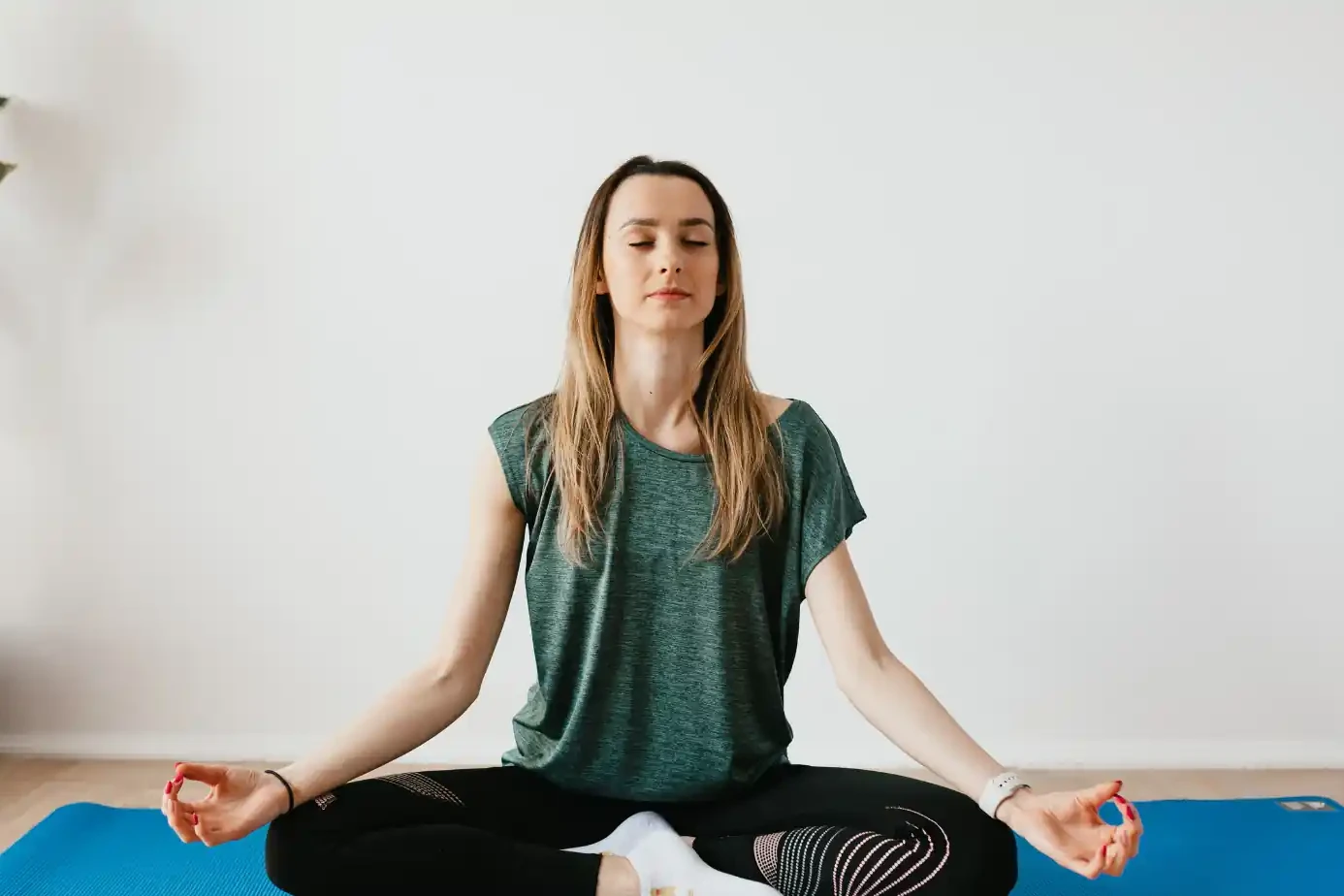Have you ever walked out of the gym with more back pain than you started with? Or tried a popular fitness trend, only to wake up the next morning unable to bend down? If yes, you’re not alone.
Back pain affects millions of people, yet most of us don’t realize some workouts do more harm than good. What you thought was helping could actually be one of the worst exercises for back pain.
In this blog, we’ll go over what types of exercises to avoid, the science behind why they hurt your back, and safe alternatives that actually help. Understanding the worst exercises for back pain is the first step toward healing, not hurting.
Table of Contents
ToggleWhy Exercise Can Be a Double-Edged Sword?
Exercise is supposed to help your back, right? Not always. While movement is crucial for healing and strength, the wrong kind of movement can make the pain worse, especially if your posture, technique, or intensity is off.
Types of Back Pain: Acute vs Chronic
Back pain usually falls into two main categories—acute and chronic. Acute back pain appears suddenly and can last up to 6 weeks. Chronic back pain lingers longer, often over 3 months.
Here are some common causes:
- Poor posture from slouching or hunching over phones
- Herniated or bulging spinal discs
- Muscle strains from lifting or twisting wrong
- Degenerative disc disease in older adults
According to the CDC, about 25% of U.S. adults reported lower back pain in just the past 3 months. That’s roughly 1 in 4 people.
Read → Exercise for Back Pain: Effective Routines for Relief and Prevention
The Worst Exercises for Back Pain (And Why They Hurt You)
Not all movement is good movement. Some popular exercises can quietly damage your spine. Let’s look at the worst exercises for back pain that you should absolutely rethink.
Toe Touches or Forward Bends
Sounds simple—but they can strain your back big time.
- Put high pressure on spinal discs in your lower back
- Overstretch your hamstrings and spinal ligaments
- Lead to sharp pain if you already have disc problems
Even flexible people should avoid this if they have back sensitivity.
Sit-Ups and Crunches
Many think these build a strong core. The truth?
- Force your spine into repeated flexion (bending forward)
- Stress the discs in your lumbar spine
- Bypass deeper core muscles and mostly activate surface abs
This is one of the worst exercises for lower back health.
Straight-Leg Leg Lifts
It looks innocent, but this one’s a trap for your lower back.
- Puts a load on your lumbar spine without proper support
- Fails to activate deep core stabilizers
- Risky if your core is weak or undertrained
Better to avoid or modify with bent knees.
Heavy Deadlifts or Squats (With Poor Form or Heavy Weights)
These can be amazing, but only if done with perfect form. Otherwise:
- They spike spinal loading and compress your lumbar discs
- Poor mechanics = herniated disc or worse
- A 2018 study in Spine journal found beginners often exceed safe force limits
This is a major contributor to back pain and gym injuries.
High-Impact Activities (Running, Jump Rope)
Jumping or pounding the ground may:
- Jolt your spine with each impact
- Worsen pain for those with disc issues or arthritis
- Cause swelling or irritation in the vertebrae
Especially harmful for those healing from spine surgery or injuries.
Roman Chair Back Extensions
This machine-based move might feel strengthening, but
- It forces your back into extreme hyperextension
- Can irritate or compress spinal discs
- Bad news if done fast or frequently
Use this only under supervision and with modifications.
Prolonged Cycling Posture
Cycling isn’t bad. But staying hunched over handlebars?
- Shortens your hip flexors, pulling on your lower back
- Rounds your upper spine, causing muscular imbalance
- Can worsen existing lumbar strain
This adds up, especially if you bike daily.
Exercises That Support and Strengthen Your Back
So what should you do instead? Here are safer moves that protect your spine and actually build a stronger back.
Bird-Dog
- Strengthens the core without stressing the spine
- Trains stability and coordination
- Easy to modify for all fitness levels
Pelvic Tilts
- Gently mobilize the lower spine
- Relieve stiffness from sitting
- Help realign hips and pelvis
Glute Bridges
- Activate glutes and hamstrings
- Take pressure off lumbar spine
- Improve hip and spine alignment
Cat-Cow Stretch
- Improves spinal flexibility
- Eases stiffness and boosts circulation
- Safe for almost anyone
Wall Sits
- Build endurance in leg and core muscles
- Keep your spine supported against the wall
- Great low-impact strength builder
Swimming and Water Aerobics
- Buoyancy reduces spinal pressure
- Great for improving overall fitness safely
- Especially effective for seniors or chronic pain patients
Walking on Flat Surfaces
- Keeps the spine gently engaged
- Promotes circulation and endurance
- Low-impact and simple to begin
What to Know Before Starting Any Back-Focused Exercise Routine
Back pain can be tricky. Jumping into the wrong routine can make things worse.
Consult a Physical Therapist or Spine Specialist
- Get a personalized plan
- Learn safe form for your condition
- Rule out serious injuries
Listen to Your Body
- Pain is not always gain
- Stop if you feel numbness, weakness, or sharp pain
- Pushing through pain can cause lasting damage
Modify, Don’t Eliminate
- You don’t have to quit exercising altogether
- Modify intensity or position to fit your needs
- Keep moving in smart, safe ways
Use Proper Equipment and Support
- Wear proper shoes
- Use lumbar support if needed
- Don’t exercise on hard or unstable surfaces
The Research: How Bad Exercises Can Worsen Back Pain?
The science is clear: doing the worst exercises for back pain can make recovery harder.
- 45% of people with back injuries made symptoms worse by doing incorrect exercises
- Spine Journal (2018): Novice lifters exceeded safe spinal compressive loads during deadlifts.
- Muscle imbalances often cause recurring back injuries
When we perform harmful exercises for spine health, we’re increasing spinal load and setting up muscle imbalances that take weeks (or months) to undo.
Common Myths That Could Be Making Your Back Pain Worse
Some myths just won’t go away—and they’re hurting your recovery.
| Myth | Why It’s Wrong | What to Do Instead |
|---|---|---|
| “Rest is best” | Prolonged rest can stiffen joints and weaken muscles | Keep moving with gentle, pain-free activities like walking or swimming |
| “No pain, no gain” | Pain is often a sign of damage, not progress | Stop exercises that hurt; modify or consult a specialist |
| “Strong abs = no back pain” | Crunches work surface muscles, not deep stabilizers | Focus on core stabilizers like transverse abdominis and pelvic floor |
| “Only old people get back pain” | Back issues can affect teens, athletes, and office workers | Practice spine-friendly habits regardless of age |
| “Lifting weights ruins your back” | Poor form ruins your back—not weights | Learn proper technique or work with a trainer |
| “Chiropractors can pop your back into place” | Adjustments may relieve symptoms but don’t fix structural issues | Combine manual therapy with strength and mobility work |
| “Back pain always means a slipped disc” | Most cases are muscular or postural, not disc-related | Get a proper diagnosis before jumping to conclusions |
| “Once you have back pain, it never goes away” | Many people fully recover with the right rehab | Don’t give up—healing is possible with a tailored plan |
Expert Guidance: A Note from Dr. Chandril Chugh
Back pain doesn’t mean you need to stop moving; it means you need to move smarter. Avoiding the worst exercises for back pain can be the turning point in your recovery. If you’ve been stuck in a cycle of pain and frustration, now’s the time to shift gears.
At my clinic, I’ve helped hundreds of people find relief with evidence-backed exercise routine plans & schedules that truly work. If you’re unsure which movements are safe, I encourage you to book a consultation.
Let’s find a plan that heals, not harms your back.
FAQs
Can exercise make back pain worse?
Yes. If you’re doing the worst exercises for back pain, it absolutely can. Poor form, high intensity, and choosing the wrong movements can aggravate your condition. Always consult a specialist like Dr. Chandril Chugh for guidance.
Should I stop all workouts if I have back pain?
No, but you should pause high-risk activities. Switch to safe workouts for back pain relief, like walking, swimming, or gentle stretches. Your body still needs movement, just the right kind.
What’s the fastest way to strengthen my back safely?
Focus on stabilizing exercises like bird-dogs, bridges, and wall sits. These protect your spine while building endurance. Consider physical therapy for back pain with a licensed expert for faster results.
Are yoga and Pilates good or bad for back pain?
It depends. Many moves help, but some poses can hurt. If you feel pain during a class, stop and ask a certified instructor. Avoid deep twists or intense backbends if you have disc issues.
What if I feel back pain during exercise—should I stop immediately?
Yes. Pain is a warning. Stop, rest, and assess. Don’t power through. If it returns, schedule a consult with Dr. Chugh.
When should I see a doctor for back pain?
If your pain lasts more than 6 weeks, or you feel numbness, weakness, or tingling, don’t delay. These are red flags.
About The Author

This article is medically reviewed by Dr. Chandril Chugh, Board-Certified Neurologist, providing expert insights and reliable health information.
Dr. Chandril Chugh is a U.S.-trained neurologist with over a decade of experience. Known for his compassionate care, he specializes in treating neurological conditions such as migraines, epilepsy, and Parkinson’s disease. Dr. Chugh is highly regarded for his patient-centered approach and dedication to providing personalized care.
→ Book a consultation to discover which remedies suit your needs best.





